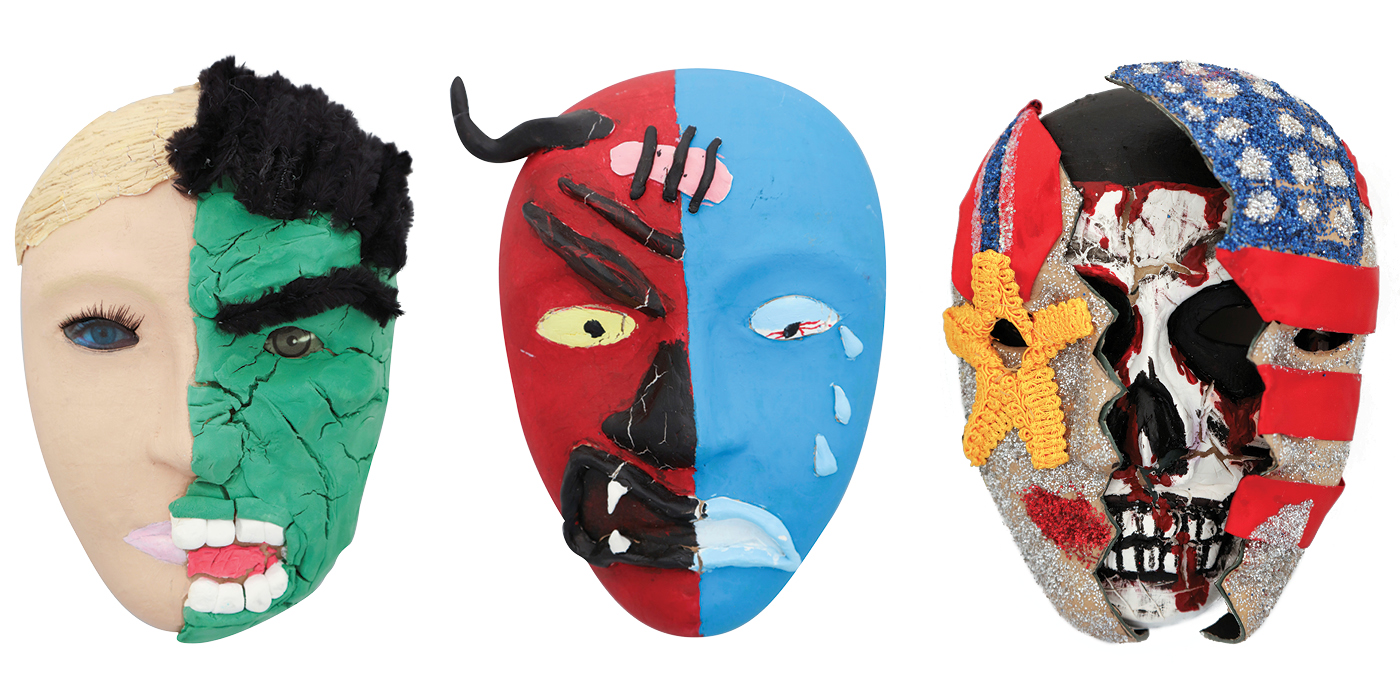
_Girija Kaimal
Kaimal is an assistant professor in the College of Nursing and Health Professions.
As part of their medical protocol for recovering from traumatic brain injuries at Walter Reed National Military Medical Center’s National Intrepid Center of Excellence (NICoE), 370 active duty service members were invited to create a simple facemask that showed how they felt as part of their art therapy treatment sessions.
More than 10 percent of the masks had symbols relating to the participant’s military units (like a logo or unit patch), and the same percentage depicted fragmented representations of military symbols (like a faded flag). More than a quarter of the masks had a representation of psychological injury.
The colorful, and revealing, end result? Active service members recovering from traumatic brain injuries who made masks depicting psychological injuries like anxiety and depression in their artwork were more likely to have higher levels of post-traumatic stress symptoms.
Researchers on a team led by Girija Kaimal, an assistant professor in the College of Nursing and Health Professions, and Melissa Walker, Healing Arts Program Coordinator and an art therapist at the NICoE, analyzed the different themes.

“Few studies in art therapy have linked visual symbols with existing standardized clinical measures. This helps us see if there are patterns of visual representations that relate to psychological states.”
–Girija Kaimal
“Few studies in art therapy have linked visual symbols with existing standardized clinical measures,” explained Kaimal. “This helps us see if there are patterns of visual representations that relate to psychological states.”
Moving forward, with funding support from the National Endowment for the Arts Creative Forces initiative, Kaimal and colleagues are continuing to investigate the relationships between the visual imagery created in art therapy sessions and the artists’ clinical symptoms, specifically focusing on whether there are signs in the art later in a patient’s treatment that indicate healing and recovery.

